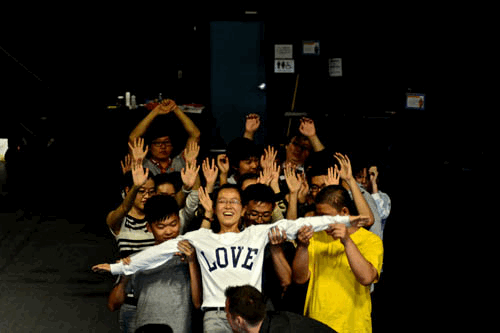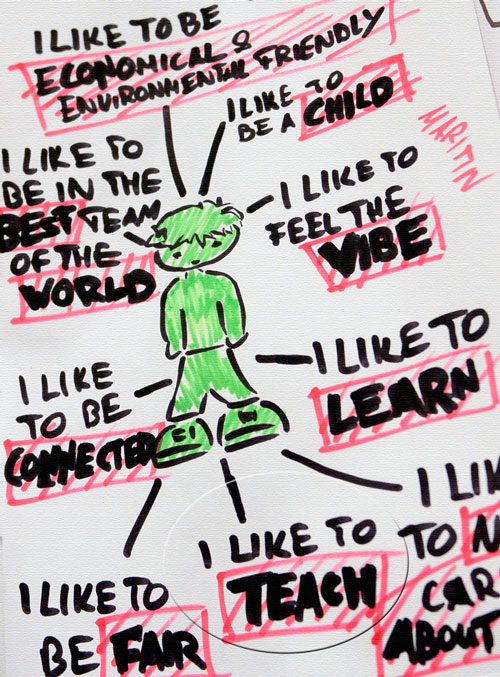Archives: Disrupting the ‘Classroom’
These writings are inspired by my ongoing passion with increasing and improving learner engagement in various teaching environments. The insights propose a different approach to facilitating learning that I have employed over the past 20 years in order to create more captivating physical and virtual hybrid learning environments in a variety contexts. I have taught learners and teachers from Canada, the U.S., Mexico, Columbia, Brazil, Israel, China, Japan, Taiwan, Korea, Denmark, Germany and France using these approaches.
How Improv Enhances Communication

A short video detailing the advantages improvisation has to support communication in collaborative activities. Shot with the current cohort of learners at the MDM Program in Vancouver, Canada.
Crowd Surfing Love @ the CDM’s IDEA-X
What better way for a brave group of Chinese students from the Communication University of China to start our fifth IDEA-X @ the Centre for Digital Media Program in Vancouver.
Crowd Surfing is a fun and engaging way for learners to embody trust—to know what it feels like to support others who depend on you, and in turn to feel supported by them.
This is just one of the many tools that we use at the Masters of Digital Media Program to empower young professionals to become aware of and improve their collaboration skills.
How Disruptive is your teaching?

Check out a vid of the awesome Masters of Digital Media Program learners over the years who have contributed to great teaching and learning moments.
Assume that your learners don’t come empty headed!

How learner-centred is your design?

If we are not in the classroom for the learners then we shouldn’t be in there at all. Obvious right? And yet, what does it mean to be fully present and engaged for the learner? From my POV it means that you need to adapt your curriculum according to the uniqueness that each learner brings to the situation. I’m not exactly sure why we would think any other way really. Each learner brings with them a set of knowledge that is unique, a specialty perhaps, a way of learning, a way of collaborating with others, a communication style or pattern. If you design your courses with a one-way information highway style, then there is no dialogue. Without dialogue, then you’ll never know anything about your learners, except that they are just as eager to be present as they are to be acknowledged. The challenge is, how do you design learning for multiple learners while considering the needs of individuals as well? One solution is to ask learners at the onset of deploying your design that knowing what they think they course is, what do they want to get out of it? This can also be asked prior to the first class. The goal after that is to uncover new ideas, extract common themes and allow them to influence your design.

